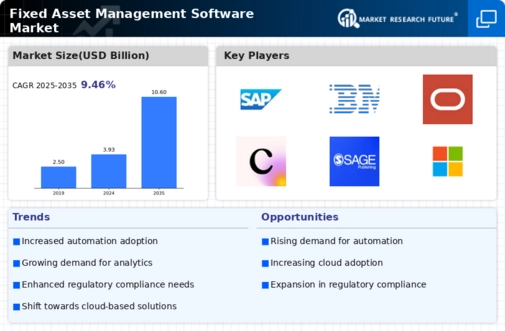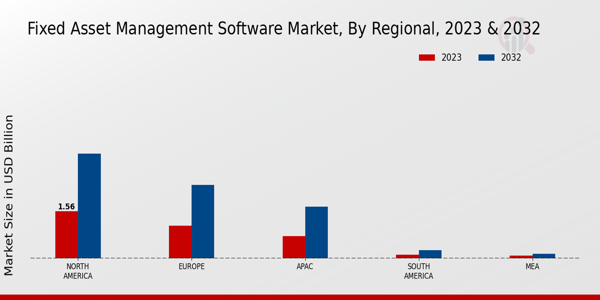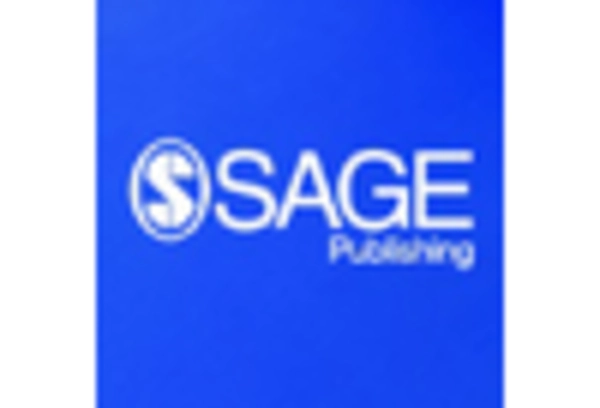Rise in Asset Complexity
The increasing complexity of asset portfolios is a significant driver for the Fixed Asset Management Software Market. As organizations expand and diversify their operations, they often encounter a broader range of assets, including tangible and intangible assets. This complexity necessitates sophisticated management solutions that can provide real-time visibility and control over asset lifecycles. Companies are turning to fixed asset management software to streamline processes such as depreciation tracking, maintenance scheduling, and compliance reporting. The market is likely to see continued growth as businesses recognize the need for advanced tools to manage their diverse asset portfolios effectively.
Increased Regulatory Compliance
The Fixed Asset Management Software Market is experiencing a surge in demand due to heightened regulatory compliance requirements across various sectors. Organizations are increasingly required to adhere to stringent financial reporting standards and asset management regulations. This trend is particularly evident in industries such as manufacturing and healthcare, where compliance with regulations like IFRS and GAAP is critical. As a result, companies are investing in fixed asset management software to ensure accurate tracking and reporting of their assets, thereby mitigating risks associated with non-compliance. The market is projected to grow as businesses seek solutions that not only streamline compliance processes but also enhance transparency and accountability in asset management.
Growing Need for Cost Efficiency
Cost efficiency remains a pivotal driver in the Fixed Asset Management Software Market. Organizations are continually seeking ways to optimize their asset utilization and reduce operational costs. The implementation of fixed asset management software enables businesses to track asset performance, identify underutilized resources, and make informed decisions regarding asset disposal or acquisition. According to recent data, companies that utilize such software can achieve up to a 20% reduction in asset-related costs. This financial incentive is compelling, prompting more organizations to adopt fixed asset management solutions as a means to enhance their overall financial health and operational efficiency.
Shift Towards Cloud-Based Solutions
The shift towards cloud-based solutions is a transformative trend in the Fixed Asset Management Software Market. Organizations are increasingly adopting cloud technology to benefit from scalability, flexibility, and cost savings associated with cloud deployments. Cloud-based fixed asset management software allows for real-time access to asset data from any location, facilitating better collaboration and decision-making. Furthermore, the subscription-based model of cloud solutions reduces upfront costs, making it more accessible for small and medium-sized enterprises. As businesses continue to embrace digital transformation, the demand for cloud-based fixed asset management solutions is likely to rise, further propelling market growth.
Enhanced Data Analytics Capabilities
Data analytics capabilities are becoming increasingly vital in the Fixed Asset Management Software Market. Organizations are leveraging advanced analytics to gain insights into asset performance, lifecycle costs, and maintenance needs. By utilizing fixed asset management software equipped with robust analytics features, companies can make data-driven decisions that enhance operational efficiency and asset longevity. The ability to analyze historical data and predict future asset performance is particularly valuable in industries such as transportation and energy. As the demand for data-driven decision-making grows, the market for fixed asset management software is expected to expand, driven by the need for enhanced analytical capabilities.


















Leave a Comment